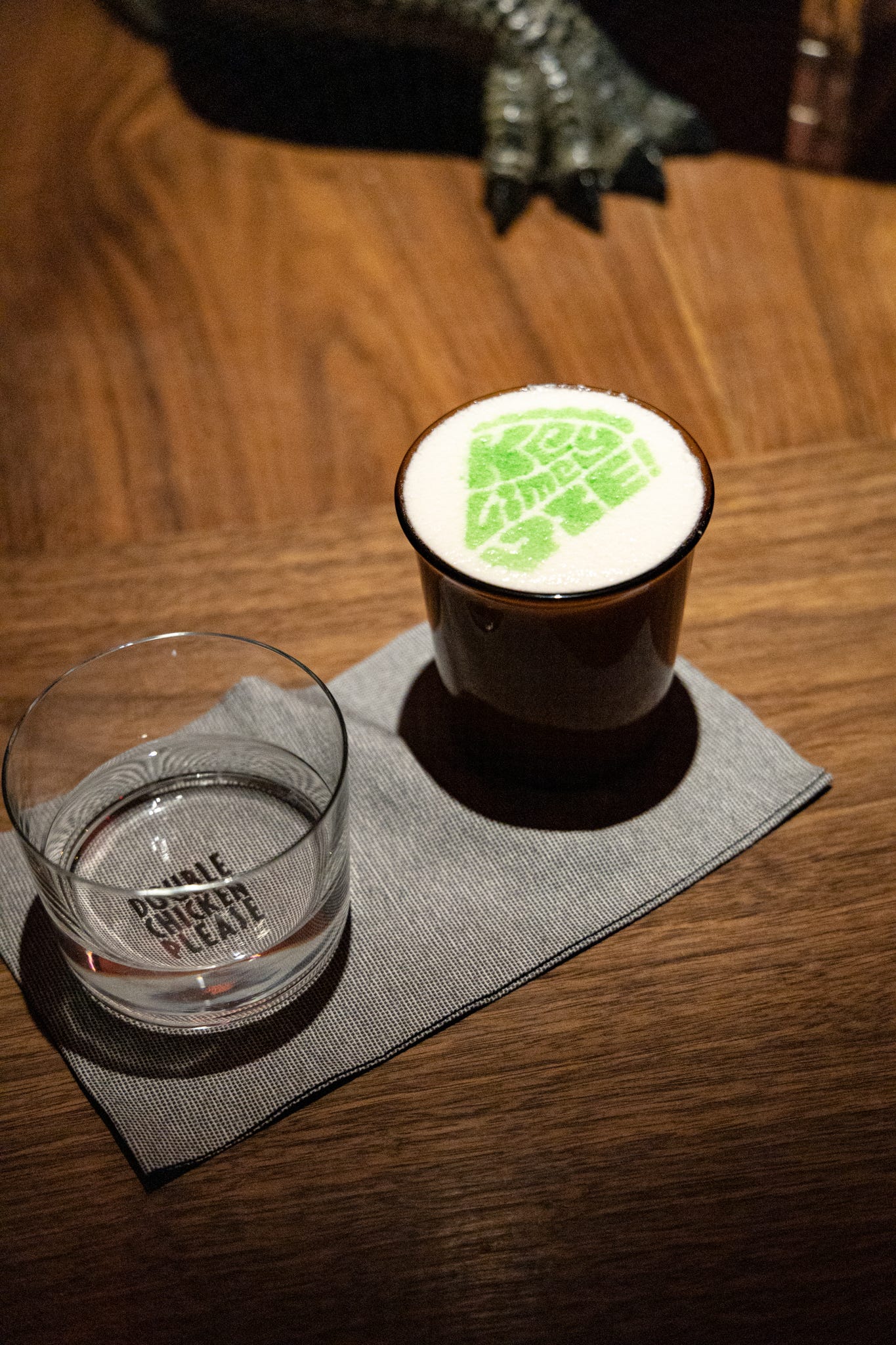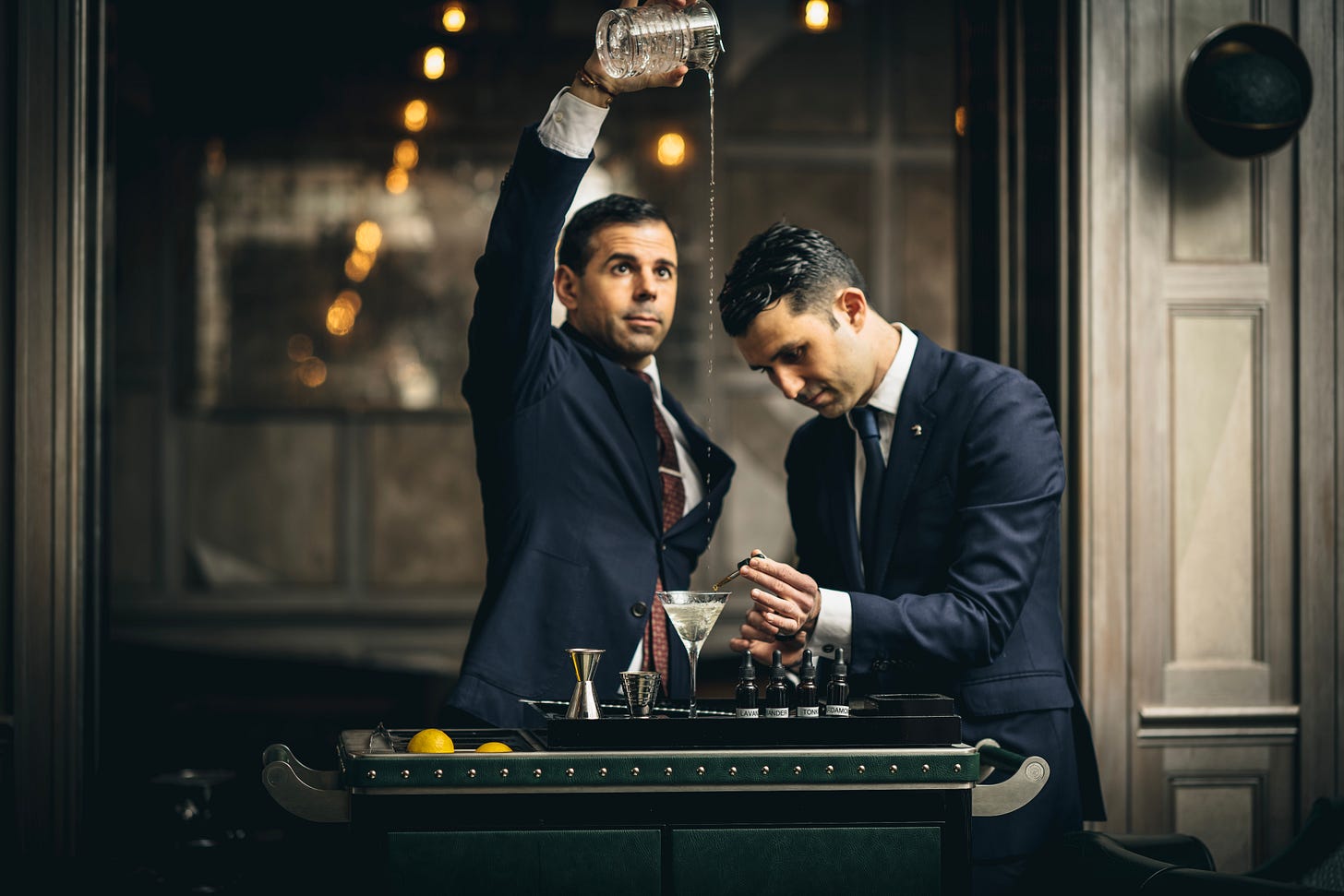After a Brief Slumber, New York City's Cocktail Scene Is Making Waves Again on the Global Stage
To wrap-up the last two months of New York City-focused drinks content on The Tipsy Traveler, I conclude with my take on the city's revitalized cocktail scene.
After two months of newsletters dedicated to New York City’s cocktail scene, it feels befitting to wrap things up with what I actually think of the city’s bars and drinks based on my recent experiences of them, and from what I see online.
For the casual cocktail enthusiasts out there who may be unfamiliar with the significance of New York City’s bar scene: It’s where classic cocktails were reclaimed, reinvented and refined over the last two decades. And as I mentioned in one of my previous newsletters, it’s also where many of the advanced culinary techniques we see used in the world’s best bars were harnessed and brought to light thanks to bar luminary Dave Arnold.
Without New York City’s wealth of pioneering cocktail bars, such as Rainbow Room, Milk & Honey, Pegu Club, Angel’s Share, Clover Club, PDT, Death & Co., NoMad, The Dead Rabbit, Booker and Dax and the like, who knows what the status of the global bar scene would be today. All I know is that, because of these bars, we can find a decent cocktail in most cities around the world, and we should all be grateful for the foundation New York City’s bars have laid for the rest of the world.
Awakening from its creative slumber
But while it’s important to pay our respects to the most influential cocktailing city in the world, I’m going to be honest: It lost its shimmer for a few years and got lost in itself while the rest of the world passed it by.
For an array of reasons — including the volume of guests served each day and night, the limited prep and storage spaces available in some shoebox-sized bars, the crippling overhead costs of running a business in Manhattan, the same (boring) approach to cocktail development and so on — New York’s bars as a whole weren’t evolving with the times, and thus they became a bit stale.
When I was still living in the city in 2018, Katana Kitten and Mister Paradise had just opened, as had Dave Arnold’s high-concept and technique-driven Existing Conditions — an unfortunate casualty as a result of the pandemic — and these were a few of the new openings that I thought offered something fresh and new to the city. Katana Kitten was serving the best highballs I’d ever had anywhere in a fun space ahead of its time; Mister Paradise was an absolute vibe, appealing to a wide range of drinkers through its approachable, yet culinary-driven, tongue-in-cheek cocktails; and Ex Con was on its Dave Arnold, mad scientist shit, clarifying and carbonating everything, chilling things with liquid nitrogen, and even using a hydraulic press to increase the liquid yield from a waffle-infused bourbon for the bar’s signature Waffle Turkey 101.
There was also one of my favorite bars in the city, the since-shuttered Ghost Donkey, where every night at this NoHo, Mexican-flavored hole in the wall was a party (read: guaranteed hangover). The cocktails were really tasty, but the vibes, star-tender-filled staff and fine selection of mezcal were everything.
But there wasn’t enough novelty in New York’s bar scene compared to cities such as London, Paris, and even other smaller markets in the States, such as Miami. New York has always known how to mix a fine cocktail because of the city’s pedigree — the classics have always been some of the best you’d get anywhere — but bartenders haven’t always been the most culinary-savvy, often resorting to the back bar and simple infusions and syrups for menu creativity.
It took one trip to London in 2019 to realize how stark the contrast was creatively between the two major cities. Granted, in London, bars can make their own distillates (something that’s illegal in the U.S because of pre-existing Prohibition laws), but most London bars were already practicing low-waste techniques and manipulating culinary ingredients in clever ways that New York hadn’t really caught onto at scale, yet.
The pandemic did New York’s bar scene few favors as a whole, but what it did do was shake things up and give an opportunity for some new, innovative bars to open, and others to reinvent themselves.
On the up and up
With new bar openings such as Overstory, Martiny’s, Shinji’s, Discolo and Double Chicken Please, and bar programs that have evolved and pushed their boundaries creatively in Eleven Madison Park, The Dead Rabbit and Mister Paradise, the scene is very much on the up and up.
It’s likely this revival is a result of New York’s bartenders finally having some time during the pandemic to dig their heads out of the sand, have a look up, and realize that other cities were truly ahead of the curve creatively, in turn inspiring the city’s bartenders to do more and push boundaries. But regardless of what sparked New York’s renaissance, I’m just pleased to see one of the world’s greatest cocktail bar cities put itself back on the map globally. They’re playing the 50 Best game, shopping their concepts around the world through various pop-ups and guest shifts at other noteworthy bars, building connections with some of the industry’s most influential personalities; and they’re learning tons about flavor, technique and trends along the way.
My only gripe about New York’s cocktail scene at the moment is how astronomically expensive it is. It is a shame because, even if I still lived there, I wouldn’t be able to afford to go out and drink at some of the city’s best cocktail bars on a weekly basis; and I make a decent living for myself where that should be feasible. With the average price of a cocktail sitting at $18 to $20 (not including 20% tip), many cocktail-loving tourists will be forced to pick and choose only a few spots to visit on trips in order to not spend $500 on a night out — which is very easy to do in New York, especially if you have a nice dinner as well.
At some bars, such as Double Chicken Please, these prices are absolutely justified given all the factors to consider — labor and prep, quality of ingredients, general overhead, etc. — but you’ll never see me paying $18 for a bang-average classic cocktail, which is the case at many of the city’s bars at the moment.
While New York’s bars are genuinely impressing on the global stage, I’m left wondering if they’ll ever be accessible again for the average cocktail enthusiast or young professional on an entry level salary who is hoping to enjoy some of the world’s best cocktails — one of the few privileges and pleasures of living in New York.

I reflect on my many drunken nights dancing the night away to Latin bangers as a young twenty-something at Ghost Donkey, swinging the pendent lights suspended over the bar top, which was illuminated reddish-pink from the light bulbs displayed on the back bar, while doing shots of Montelobos mezcal with bartenders Nacho, Lalo and Cat who knew how to entertain a crowd of agave spirit-lovers.
It is moments such as these that most New Yorkers in their early-, and after the pandemic even late-20s are losing out on in the city, aside from indulging on special occasions. Will things ever change in New York? I’m not hopeful. But enjoy it all now as much as you can because once cocktails hit the $20 to $22 average, don’t expect to see me around. I’ll leave the wealthy folks to to the drinking for me.






